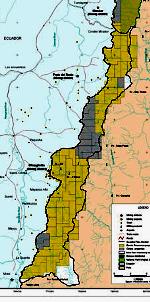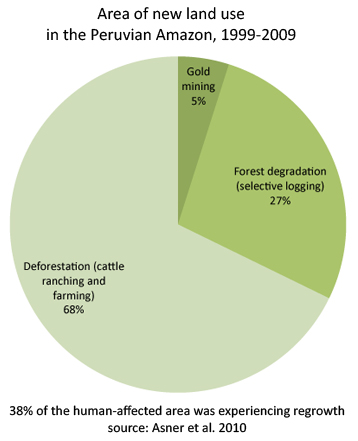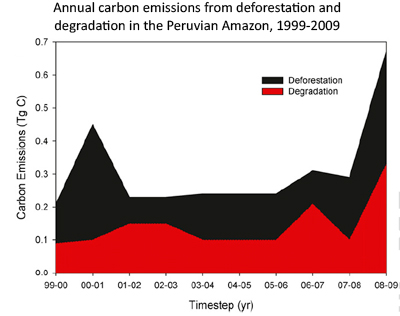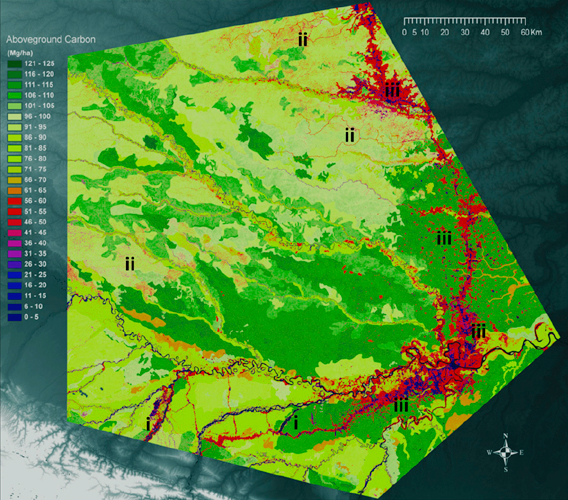"The real Avatar" film: calvario de pueblos indígenas Awajún, Wampis y Harakmbut generado por la explotación minera en el Perú
In just 10 years nearly half the Peruvian rainforest–one of the most biologically diverse areas on Earth–may be past the point of no return if current rates of deforestation continue. In The Real Avatar, David Suzuki sets off for the Amazon to investigate the effect this rush is having on the native peoples who call this land their home.
.
Presentan El Avatar real, documental inspirado en los indígenas aguajún, wampis y harakmbut
4 March 2011 - El ambientalista y activista, David Suzuki, presentó ayer “El Avatar real” (The real Avatar), un documental que retrata los conflictos de los pueblos indígenas Awajún, Wampis y Harakmbut generados por la explotación minera y de hidrocarburos
.
“En el Avatar real, David Suzuki viaja a la Amazonía peruana para ver de primera mano las fuerzas que amenazan el modo de vida de sus pueblos indígenas, y para explorar la magnífica belleza y riqueza de esta tierra”, señala el portal de la CBC, medio en donde se presentó el documental.
Según la CBC, El Avatar real, producida y dirigida por Roberto Verdecchia, fue grabado en la Cordillera del cóndor (Amazonas) y la selva suroriental del país. La realización destaca que la Amazonía peruana está amenazada por la explotación minera y de hidrocarburos, lo que originaría, en tan solo diez años, la desaparición de la mitad de flora y fauna existente.
“En el Avatar Real, David Suzuki pone en marcha una investigación para ver los efectos que esta carrera está teniendo en los pueblos originarios”, agregó la CBC.
David Suzuki es un conocido activista canadiense, creador de “La naturaleza de las cosas”, documental retransmitido en más de cuarenta países del mundo.
El avance del documental puede ser visto en línea en la siguiente dirección:
http://www.cbc.ca/documentaries/natureofthings/2011/peru/
The Real Avatar
Thursday March 3 at 8 pm on CBC-TV, repeating Thursday March 10 at 10 pm ET/PT on CBC News Network
http://www.cbc.ca/documentaries/natureofthings/2011/peru/
Related Video
The Real Avatar
Watch this film online.
45:19 min 
The Real Avatar
Watch the trailer.
:37 min 
Peru is in the midst of an unprecedented resource “rush” – 72% of the jungle has been zoned for oil development alone. And according to recent studies, in just 10 years nearly half the Peruvian rainforest–one of the most biologically diverse areas on Earth–may be past the point of no return if current rates of deforestation continue. In The Real Avatar, David Suzuki sets off for the Amazon to investigate the effect this rush is having on the native peoples who call this land their home.
.


.
Under the shadow of the Cordillera del Condor mountains, and near where the mighty Amazon river begins, live the Awajun and Wampis peoples, a proud, warrior nation, never conquered by the Incas or the Spanish. Today, they feel they are being invaded again: Peruvian and Canadian mining companies aim to set up a gold mine on land these natives say is their traditional territory. In fact, the Awajun had an agreement for the establishment of a National Park along the Cordillera that would protect their land. But the Awajun found their agreement broken, quite literally in two, when Peru's President gave half the area over to mining interests. Studies indicate that mining here would devastate the area's water system – water that flows to the downstream Awajun communities.
The Awajun were already part of a deadly confrontation with National Police in 2009 over Peru's plans for “developing” the Amazon – can more violence be avoided in the future?
.
In the southern province of Madre de Dios, native peoples fought successfully for over a decade to establish a communal Reserve to protect their lands from illegal mining and logging. The Reserve created was so protected that not even the natives themselves were allowed to use it. And yet today, this same Reserve finds itself nearly totally engulfed by Oil Block 76, sold to the Hunt Oil Corporation of Texas. As Hunt's exploratory work begins, the natives find themselves divided. Some feel oil development will bring jobs and money, while others fear the social and environmental impacts, and know their very way of life is at risk.
And for those nearby “Uncontacted” natives living in the forest in voluntary isolation, in the same way they have for thousands of years, the stakes are even higher.
In The Real Avatar, David Suzuki journeys to the Peruvian Amazon to see first-hand the forces threatening the way of life of its indigenous peoples, and to explore the magnificent beauty and richness of this now-vanishing land, this “Pandora” on Earth.
A dramatic story of cultures in conflict, with the fate of the Amazon hanging in the balance, The Real Avatar is shot in full HD and is produced and directed by Roberto Verdecchia.
------------------------------------

.
.


.
.

.
.
Awajun y Wampis exigen retiro de minera canadiense Dorato

Servindi, 22 diciembre, 2008.- Los pobladores Awajun y Wampis de la Zona Reservada Santiago Comaina y de la provincia de Condorcanqui, región Amazonas, dan un plazo de 48 horas para el retiro de la empresa minera canadiense Dorato SAC en sus territorios. La explotación de cobre, oro y uranio podría contaminar la zona de la Cordillera del Cóndor y los ríos Sawientsa, Comaina, Marañón y Amazonas. También podría afectar el Parque Nacional Ichigkat Muja, la Zona Reservada Santiago-Comaina y la Reserva Comunal Tuntanain. El acuerdo se adoptó en una asamblea de la Organización de Desarrollo de Comunidades Fronterizas del Cenepa (ODECOFROC) realizada en la comunidad nativa Mamayaque el 14 de diciembre de 2008. Los indígenas exigen que la empresa Dorato se retire del Puesto de Vigilancia Militar Tambo y de la comunidad nativa Ciro Alegría.
Lea también el Memorial de Mamayaque (14 de Diciembre, 2008)
ACTUALIZAMOS: Indígenas destruyeron campamento minero en Amazonas
Nativos desalojaron todo un campamento minero
-----------------------------------
En reunión de Diamante
Comunidades nativas de la Reserva Comunal Amarakaeri acuerdan defender "con la vida" territorio ancestral harakmbut ante ingreso de la Hunt Oil Company
25 de agosto de 2009 - Las diez comunidades nativas de la Reserva Comunal Amarakaeri rechazaron de manera unánime el ingreso de la compañía Hunt Oil Company a su territorio ancestral del pueblo Harakmbut, Yine y Matsigenka, en reunión realizada el pasado 20 de agosto en la comunidad de Diamante, en la provincia de Manu, región de Madre de Dios.
fenamad-indigenas.blogspot.com/2009_08_01_arc...
El acuerdo se conoció hoy, 25 de agosto, con la publicación del acta de Diamante, en donde se aprueba de manera conjunta entre los delegados de las diez comunidades nativas beneficiadas del área natural protegida, la jefatura de la Reserva Comunal Amarakaeri, el consejo directivo del Ejecutor del Contrato de Administración de la Reserva Comunal Amarakaeri, ECA-RCA, la Federación Nativa del Río Madre de Dios, FENAMAD, organización representativa de las comunidades indígenas de Madre de Dios, y comuneros y autoridades locales presentes en el acto.
El presidente del ECA-RCA, Adán Corisepa, de la etnia harakmbut, dijo que las comunidades están dispuestas a defender hasta con la vida el territorio en donde vivieron sus ancestros. “En ese lugar donde es hoy la Reserva Comunal Amarakaeri se encuentran las tumbas de nuestros antepasados, ahí fueron contactados los “amarakaeris” (nombre dado a los primeros harakmbuts). Tiene un gran valor cultural, histórico y geográfico. Estamos dispuestos a defenderlo con nuestras vidas”.
El lote 76 de exploración y explotación en la región de Madre de Dios, que fue adjudicado por el Estado en el mes de marzo del 2009 a la compañía Hunt Oil Company, con sede en Texas, Estados Unidos, se superpone casi en su totalidad sobre la Reserva Comunal Amarakaeri, y pone en peligro la Zona Cultural del Manu, dos áreas altamente vulnerables por las actividades extractivas de madereros y petroleros.
La Reserva Comunal Amarakaeri se encuentra hoy en riesgo por la entrada de la empresa Hunt Oil Company, empresa que ya ha iniciado el Estudio de Impacto Ambiental, el proyecto de Prospección Sísmica en áreas circundantes de la Reserva, y según algunos comuneros incluso ya está realizando trabajos al interior de su área de influencia sin el debido consentimiento de las comunidades.
La idea de establecer la Reserva Comunal Amarakaeri surgió como iniciativa de las comunidades Harakmbut en el Rimanacuy de Pucallpa de 1986, como una preocupación para asegurar sus tierras ancestrales: base fundamental de sus creencias, de su historia, así como para proteger a la fauna silvestre comestible y otros recursos esenciales para su supervivencia.
La reunión de Diamante sirvió además para acordar realizar acciones de monitoreo permanente en el área de la Reserva Comunal Amarakaeri por los indígenas, que están dispuestos a defenderlo con sus arcos y flechas, y llevar acciones de control para verificar que efectivamente la empresa Hunt Oil no esté en operaciones dentro de la superficie que tiene más de 400 mil hectáreas.
La FENAMAD indicó que realizará las acciones judiciales necesarias en contra de la empresa Hunt Oil para que paralice sus actividades de prospección sísmica y se retire definitivamente de la Reserva Comunal Amarakaeri, que se creó después de quince años de lucha de los pueblos indígenas de Madre de Dios.
.
 http://www.elpais.com/recorte/20101021elpepusoc_6/XXLCO/Ies/ultimo_arbol.jpg
http://www.elpais.com/recorte/20101021elpepusoc_6/XXLCO/Ies/ultimo_arbol.jpg
.
 http://greenupgrader.com/files/2009/07/cowboy-550x825.jpg
http://greenupgrader.com/files/2009/07/cowboy-550x825.jpg
.
.

.

.

Variation in aboveground carbon storage at 0.1 ha resolution throughout a 4.3 million ha region of the Peruvian Amazon, derived from an integrated use of CLASlite, LiDAR and field-plot data. Examples of (i) artisanal gold mining, (ii) selective logging and other forest disturbances, and (iii) deforestation for cattle ranching, road building, and other infrastructure are indicated. Click image to enlarge. Peru's rainforest highway triggers surge in deforestation, according to new 3D forest mapping September 06, 2010 Source: mongabay.com
Limiting damage from roads in Amazon Rain Forest
Aside from restricting development of new roads from frontier forest areas, there are limited options for mitigating the impacts of road expansion. Current efforts focus on measures taken in advance of road construction. For example, the Juma Sustainable Development Reserve Project for Reducing Greenhouse Gas Emissions from Deforestation aims to curb forest clearing along the AM-174 and BR-319 highways by establishing a network of strict protected areas along the roads. The project is financed by a forest carbon fund on the basis that it will reduce emissions from deforestation by 190 million tons of carbon dioxide by 2050 compared to a business-as-usual approach.
The authors also highlight other mechanisms for minimizing road impacts, including regulating access to roads, promoting railroads when possible, requiring proper environmental impact assessments prior to construction, limiting road width and gradient, restricting tree clearing along roads, and banning night-time driving. But in the end, the authors conclude that "actively limiting frontier roads... is by far the most realistic, cost-effective approach to promote the conservation of tropical nature and its crucial ecosystem services."
William F. Laurance, Miriam Goosem and Susan G.W. Laurance. Impacts of roads and linear clearings on tropical forests. Trends in Evolution and Ecology (TREE) 1149 1–11
Roads are enablers of rainforest destruction
September 24, 2009 by mongabay.com
www.amazonrainforestnews.com/2009_09_01_archi...
.
.
.
 http://www.peruvia-gallery.com/images/deforestacion.jpg
http://www.peruvia-gallery.com/images/deforestacion.jpg

Title:
Peru, northern Amazon, Rainforest, aerial view
Caption:
JUNE 2007: Aerial scenes from the Northern Amazon from the town of Iqitos to the Amazon oil town of Trompederos, Peru, 11 June 2007. The scenes show pristine forest as well as the impact of roads into the forest, roadside urbanisation and the effects of that. The images also show the oil town of Trompederos. Scenes there depict the industry of Petroplus, an Argentine oil company and the effect it has on the forest and the pipeline leading thorugh it. The Amazon is a pristine river and massive rainforest is under threat from infrastructure development in Peru. The Achuar Indian people of this Northern region recently won a legal battle with Argentinian Oil giant PlusPetrol to stop them dumping waste oil water.
www.gettyimages.com/.../The-Image-Bank
.

Amazonia deforestation - Daniel Beltra
.

.
 http://www.ibcperu.org/programas/images/mapa-awajun-wampis.jpg
http://www.ibcperu.org/programas/images/mapa-awajun-wampis.jpg
------------------------------------



